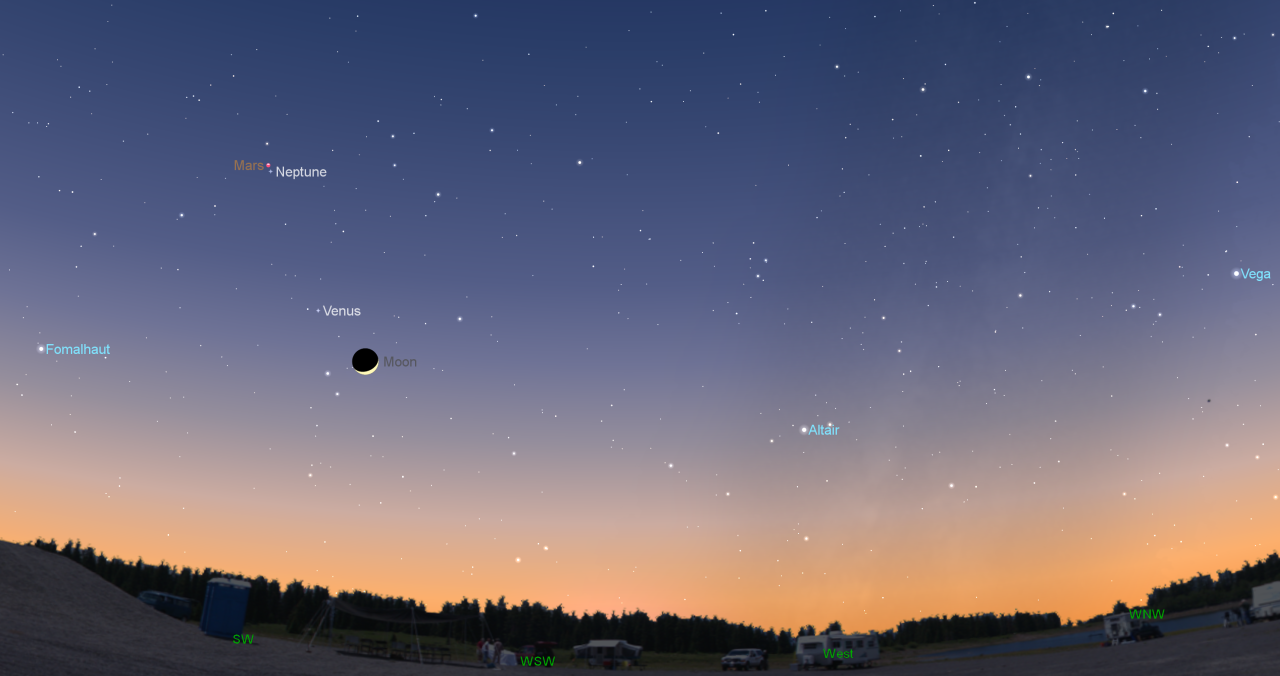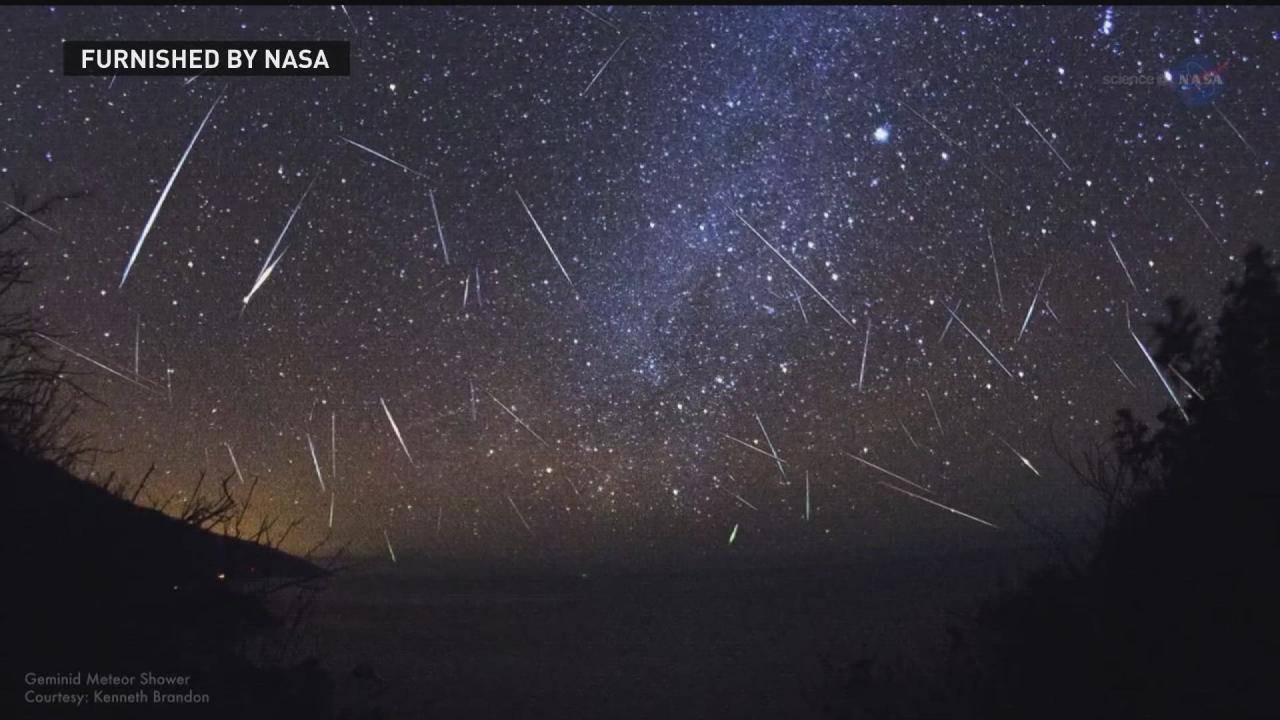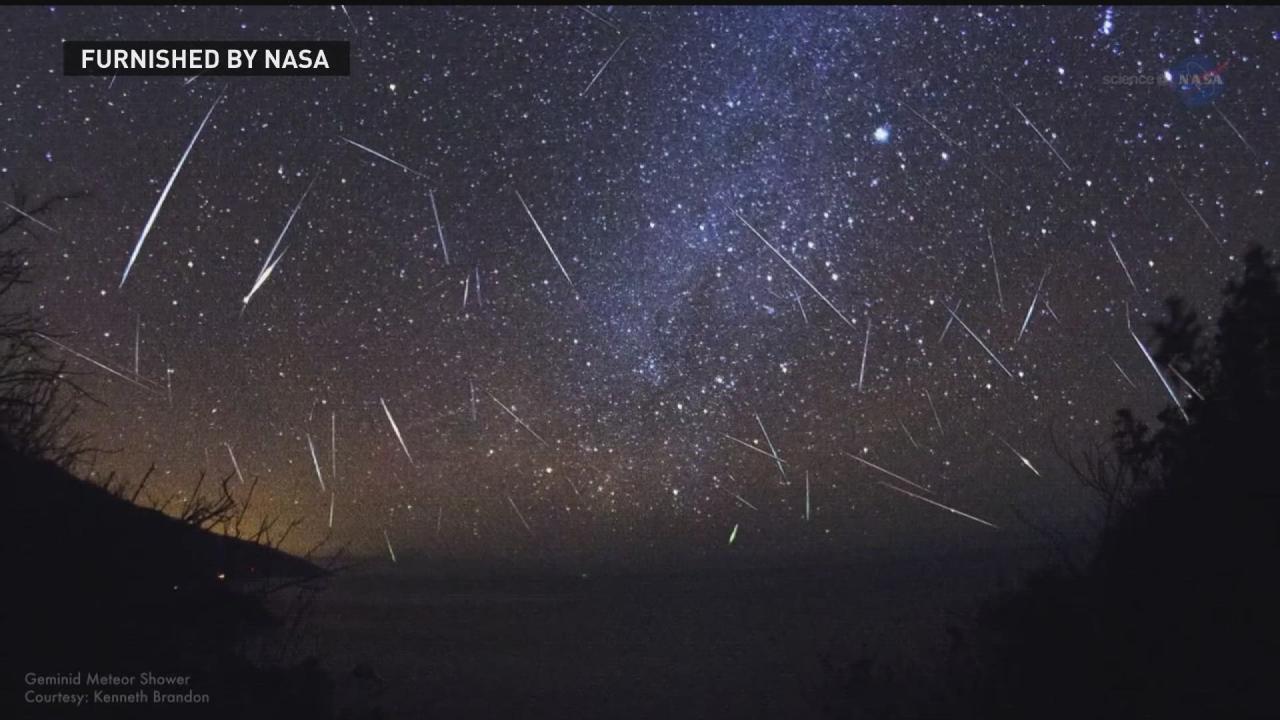Venus Moon duo and Quadrantids meteors stun stargazers! This celestial spectacle treated skywatchers to a breathtaking display of cosmic beauty. A close conjunction of Venus and the crescent moon provided a dazzling backdrop for the vibrant Quadrantids meteor shower, creating a memorable event for amateur and seasoned astronomers alike. We’ll explore the science behind this celestial alignment, the meteor shower’s origins, and the incredible experiences of those fortunate enough to witness it.
The unusually bright pairing of Venus and the Moon offered a stunning visual treat. Their proximity, caused by their orbital paths aligning from our perspective on Earth, created a captivating sight easily visible even in moderately light-polluted areas. Meanwhile, the Quadrantids, known for their bright and fast meteors, streaked across the sky, adding another layer of wonder to the nighttime show.
The combination of these two celestial events made for a truly unforgettable experience for many.
The Celestial Dance of Venus, the Moon, and the Quadrantids: Venus Moon Duo And Quadrantids Meteors Stun Stargazers
The night sky recently offered a spectacular double feature for stargazers: a dazzling conjunction of Venus and the crescent Moon, closely followed by the peak of the Quadrantids meteor shower. This celestial event captivated observers worldwide, providing a breathtaking display of cosmic beauty and a unique opportunity for astronomical observation.
Venus and the Moon Conjunction

This conjunction presented a beautiful sight. Venus, as the brighter of the two, shone brilliantly near the slender crescent Moon. Their apparent proximity varied depending on the observer’s location and the time of observation, but they appeared close enough in the sky to easily fit within the same field of view of binoculars or a low-power telescope. The brightness of Venus, a planet known for its dazzling brilliance, contrasted sharply with the delicate glow of the crescent Moon, creating a striking visual spectacle.
This pairing wasn’t a random occurrence; it’s a result of the planets’ and Moon’s orbital paths around the Sun. The apparent closeness is a matter of perspective from Earth; the actual distance between Venus and the Moon remained vast. Atmospheric conditions played a significant role in the visibility. Clear, dark skies provided the best viewing opportunities, while light pollution and cloud cover could have diminished the visibility of the fainter features.
The Quadrantids Meteor Shower
The Quadrantids, known for their potential for high meteor rates, provided another highlight of the celestial event. This meteor shower radiates from a point in the constellation Boötes, near the obsolete constellation Quadrans Muralis, hence its name. Its peak activity typically occurs in early January, offering a short but intense display. The Quadrantids are unique due to their parent body, a near-Earth asteroid named 2003 EH1.
Unlike most meteor showers originating from comets, the Quadrantids’ origin from an asteroid makes its characteristics slightly different, such as its relatively short peak activity period. Compared to other major meteor showers like the Perseids or Geminids, the Quadrantids have a sharper, more concentrated peak, meaning the highest rates are visible for a shorter duration. This characteristic makes observing the Quadrantids a more time-sensitive event.
Witnessing the stunning Venus-Moon duo and the Quadrantids meteor shower was incredible! If you’re looking to share such amazing celestial events with others through engaging e-learning, check out this guide on how to choose the best AI voice generator for e-learning to make your lessons truly shine. A great voice can bring the wonder of the night sky to life, just like experiencing the Venus-Moon conjunction and the meteor shower firsthand.
Stargazing Experiences and Observations

Many stargazers shared their experiences online, describing the awe-inspiring celestial display. The following table summarizes some of these observations:
| Location | Time of Observation | Noteworthy Details |
|---|---|---|
| Rural Arizona | 1:00 AM MST | Venus and Moon incredibly bright; saw several Quadrantids, including a bright fireball. |
| Southern California Coast | 3:30 AM PST | Moon and Venus were stunningly close; meteor shower was less visible due to some cloud cover. |
| Rural Pennsylvania | 2:00 AM EST | Excellent viewing conditions; observed numerous Quadrantids, some with persistent trains. |
One can imagine a hypothetical stargazing session: the crisp night air, the gentle rustling of leaves, the distant hooting of an owl. The dominant feature would be the brilliant pairing of Venus and the Moon, their light reflecting off the landscape. Interspersed with this bright duo, the occasional streak of a Quadrantid meteor would flash across the sky, leaving a fleeting trail of light before fading away.
The overall atmosphere would be one of tranquility and wonder, a reminder of the vastness and beauty of the universe.
A visual representation of the night sky would show a dark canvas dotted with countless stars. A slender crescent Moon would be positioned relatively close to the brilliantly shining Venus, both near the constellation Boötes. The radiant point of the Quadrantids would be subtly marked by the apparent convergence of meteors streaking across the sky. The colors would be dominated by the silvery white of the Moon and the yellowish-white of Venus, contrasting with the faint, fleeting trails of light from the meteors.
Astrophotography Challenges and Techniques
Capturing this event photographically presented unique challenges. The significant brightness difference between Venus and the Moon, coupled with the fleeting nature of meteors, required careful planning and technique. To photograph the conjunction, a camera with a tripod and a wide-angle lens would be ideal. Exposure settings would need to be adjusted to capture the detail of the Moon and Venus without overexposing them.
For meteors, a high ISO, wide aperture, and fast shutter speed would be necessary, along with a longer exposure time to increase the chance of capturing a meteor trail. Different lenses would offer different fields of view, influencing the composition of the image, while varying ISO settings would affect the sensitivity to light and noise levels in the final image.
Using a camera capable of long exposures, along with techniques like stacking multiple images, can enhance the chances of capturing faint meteors.
Public Interest and Impact, Venus Moon duo and Quadrantids meteors stun stargazers

The widespread interest in this celestial event highlights the enduring human fascination with the cosmos. Social media platforms and news outlets played a significant role in disseminating information and images, further fueling public engagement. Sharing experiences and stunning astrophotography enhanced the collective appreciation of the event. Such events offer valuable educational opportunities, fostering a greater understanding and appreciation of astronomy and space exploration, inspiring curiosity and wonder about the universe.
Conclusion
The convergence of the Venus-Moon conjunction and the Quadrantids meteor shower provided a spectacular celestial event that captivated stargazers worldwide. From the dazzling close approach of Venus and the Moon to the fiery streaks of the Quadrantids, this event highlighted the beauty and wonder of the night sky. The shared experiences and stunning imagery captured by many demonstrate the enduring power of celestial events to inspire awe and wonder, sparking interest in astronomy and the universe beyond our planet.
It serves as a reminder of the incredible sights our universe offers, encouraging us to look up and appreciate the cosmos.
Hey stargazers! Did you catch the amazing Venus-Moon duo and the Quadrantids meteor shower? It was a pretty spectacular show, but if you were planning a weekend trip to see it, check this out first: Winter storm warning issued for Kansas City, as weekend travel to might impact your plans. Hopefully, you’ll still get a chance to enjoy the celestial show, even if you need to reschedule your travel!
FAQ Guide
How often do Venus and the Moon appear this close together?
The frequency of close Venus-Moon conjunctions varies. While not exceedingly rare, they don’t happen monthly. The exact timing and apparent proximity depend on their orbital positions.
Hey stargazers! Did you catch the amazing Venus-Moon duo and the Quadrantids meteor shower? It was quite a celestial show! Meanwhile, down on Earth, some exciting news broke – check out how Real Madrid become first team to reach 5000 LaLiga points , a truly impressive feat! But back to the stars – let’s hope for more stunning celestial events soon!
Are Quadrantids meteors dangerous?
No, they are tiny particles burning up harmlessly in the Earth’s atmosphere. They pose no threat to us on the ground.
What’s the best way to view a meteor shower?
Find a dark location away from city lights, lie down comfortably, and let your eyes adjust to the darkness for at least 20 minutes. Be patient!
Can I photograph the Quadrantids?
Yes, but it requires a camera capable of long exposures and a tripod for stability. Experiment with settings to capture both the fainter meteors and the brighter celestial objects.
